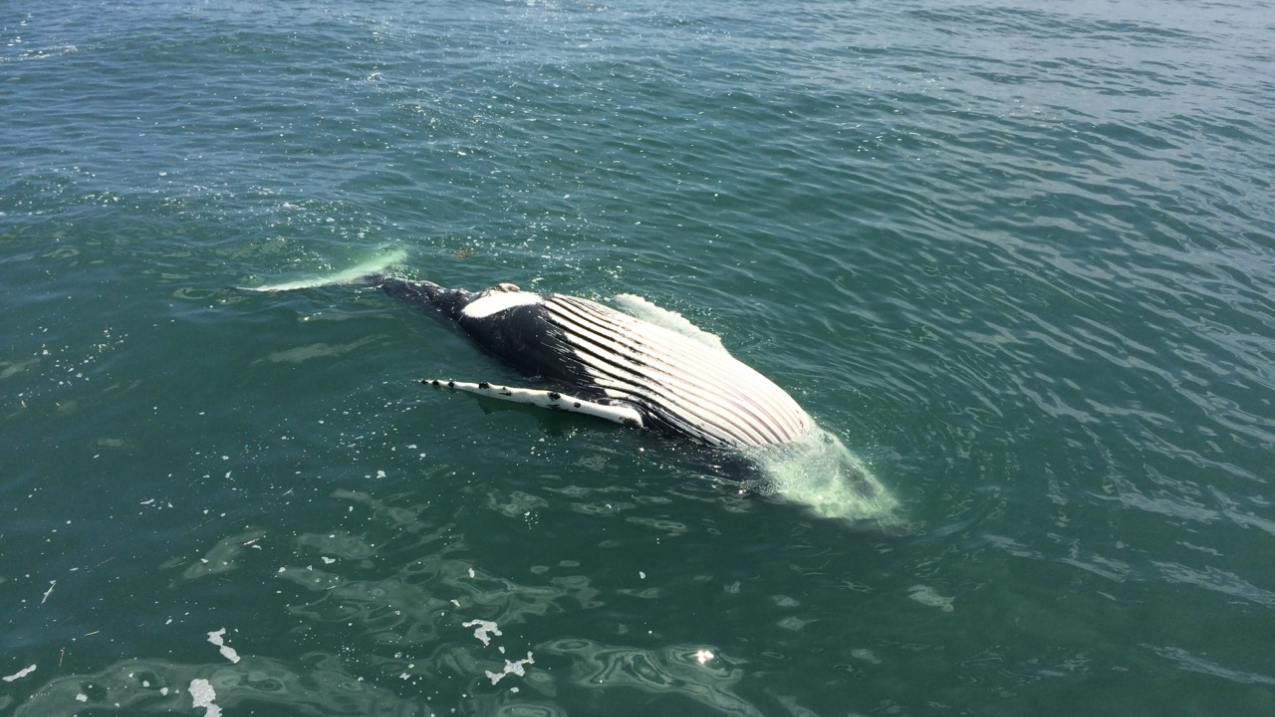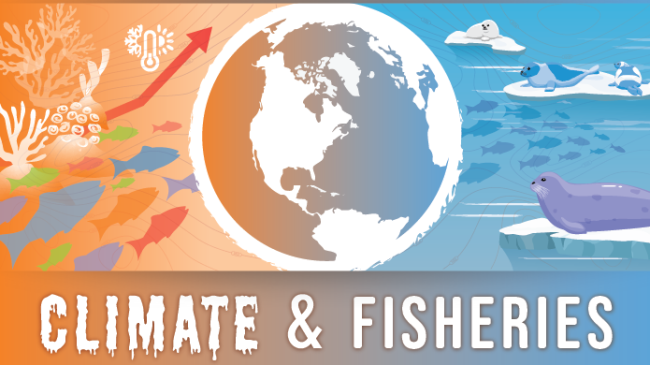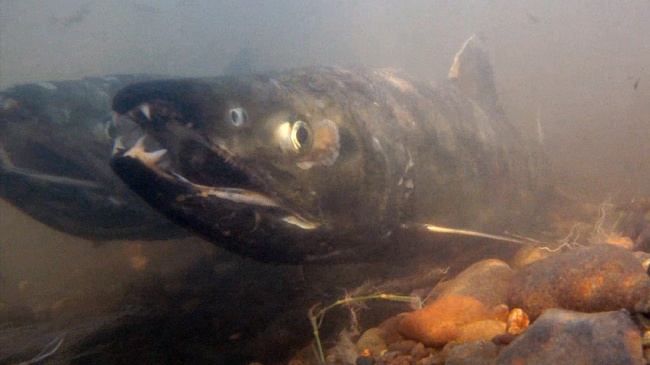NOAA Fisheries declares an ‘unusual mortality event,’ launches investigation
Since January 2016, 41 humpback whales have died along the U.S. East Coast, from Maine to North Carolina. A team of veterinarians, marine biologists, marine mammal stranding network members, and others are determined to understand why.

A floating, deceased humpback whale carcass reported on July 5, 2016 at the mouth of the Delaware Bay. (Image credit: Courtesy of MERR Institute)
Humpback whales in U.S. Atlantic coastal waters are no longer an endangered species, but they are an integral part of our marine environment – and one of the most iconic. Thus, the significant die-off of these whales (defined as an ‘unusual mortality event’ under the Marine Mammal Protection Act) demands an investigation to determine what environmental conditions or human activities could be the cause.
While no evidence of infectious disease or high levels of harmful biotoxins have been found in animals tested so far, these will be some of many indicators scientists will research. For 10 of the whales, however, NOAA found evidence of vessel interactions, such as propeller wounds or blunt force trauma indicative of a ship or boat strike. The investigation will evaluate these findings as well any changes in habitat.
How you can help
"One of the most important things the public can do to help us is to report stranded or dead whales to NOAA," said NOAA veterinarian Deborah Fauquier. Information for alerting responders in each coastal state can be found online. It’s also important to know these guidelines for safely viewing whales in the wild. (See our feature, “5 ways to responsibly view wildlife.”)
Learn more about this unusual mortality event.



